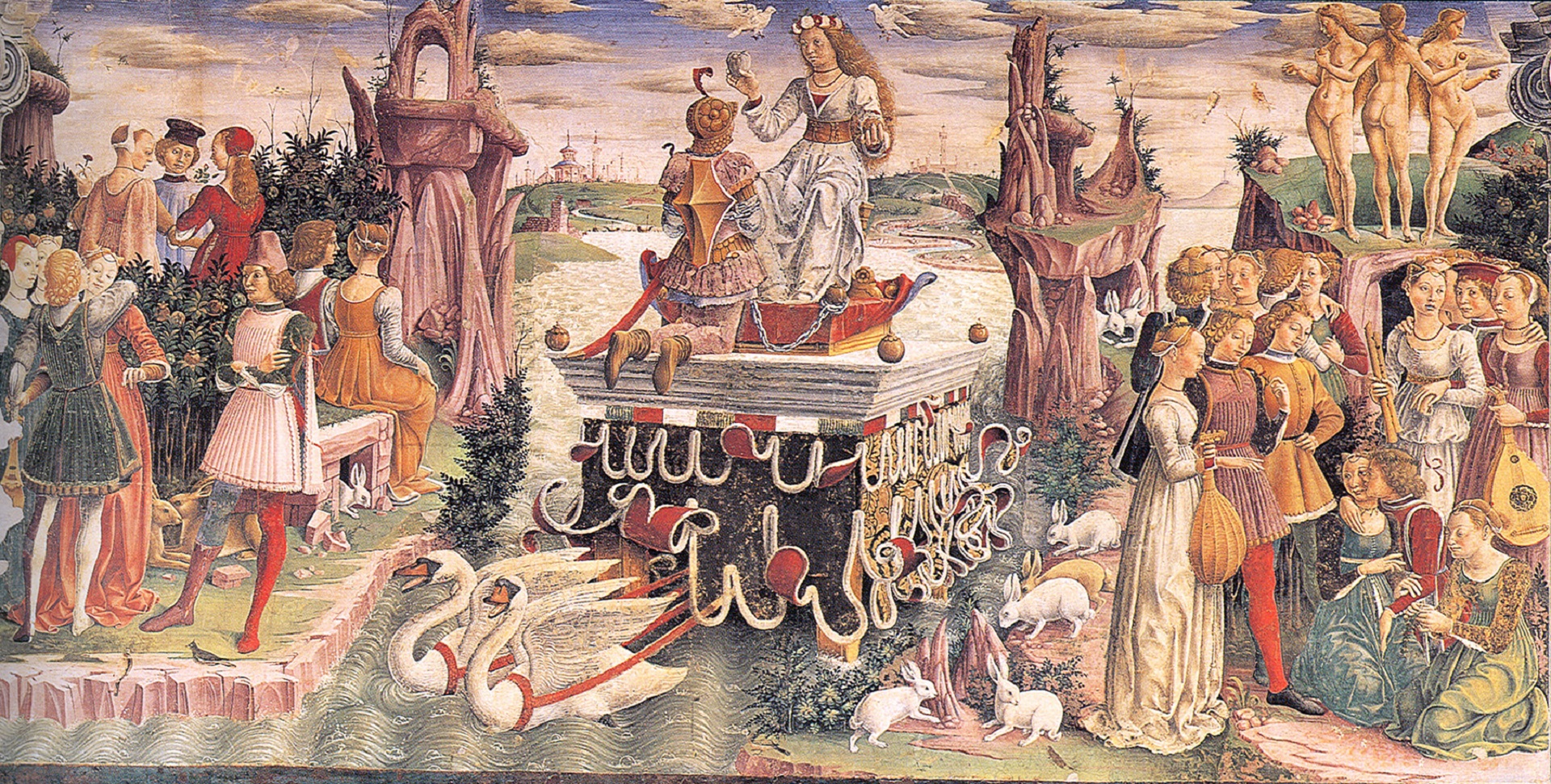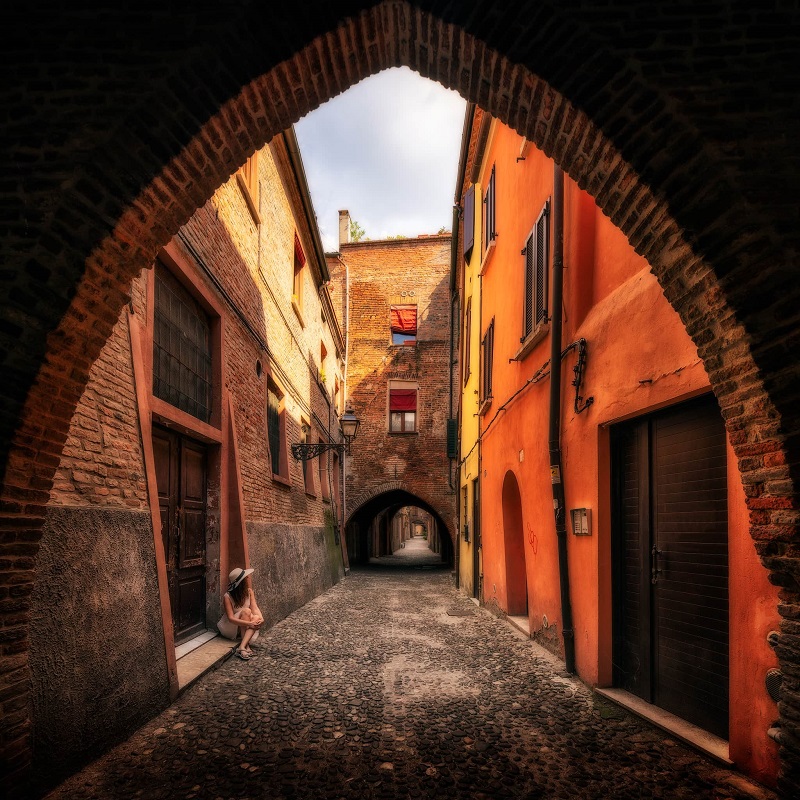 Ferrara is one of the most beautiful cities of Italy. It grew up around a ford over the River Po, became an intellectual and artistic centre that attracted the greatest minds of the Italian Renaissance and UNESCO World Heritage Site.
Ferrara is one of the most beautiful cities of Italy. It grew up around a ford over the River Po, became an intellectual and artistic centre that attracted the greatest minds of the Italian Renaissance and UNESCO World Heritage Site.
 2020-09-20 16:56:09
2020-09-20 16:56:09
Visit and discover Ferrara, a beautiful Renaissance city and UNESCO World Heritage Site: discover one of the most beautiful cities of Italy. Walk-in "Old City" Ferrara, then go by the street Via Delle Volte. Have a pause, take coffee then head to Cattedrale di San Giorgio and then visit the palace of the Palazzo Skifanoia, wherein explore the Salone dei Mesi (Salon of the Months): one the most secret paradise of North Italy and so on ...
You will agree that even in the most modest city in Italy there can be something magical. Although the city of Ferrara is not a small city, it is famous for its almost 9 km long ancient walls. A city with palaces from the 14th and 15th centuries and stunning cathedrals are ideal for romantic walks in the center. In the Middle Ages and the Renaissance, Ferrara was a city equal in value to Milan, Florence, and Venice.
Ferrara is located in the Italian region of Emilia-Romagna, located on the territory of a large plain in the Po River Valley, 50 km from the sea. Ferrara is a magnificent city of art and one of the capitals of the Renaissance.
One of the highlights of Ferrara is its architecture and layout, which froze between the Middle Ages and the Renaissance. To feel the past, just take a city tour or take a walk along with the long Via Delle Volte or other old streets of the old town. Here, under the feet, are old cobblestones, and above your head are the passages between the buildings, which form a series of arched tunnels. Delle Volte, unlike many such picturesque medieval streets, is not oversaturated with shops and other tourist attractions.
To discover the beauty of the city of Ferrara and feel the soul of the old city, you will need to walk to the historic center of Ferrari, which is included in the UNESCO World Heritage List. The historical center has largely preserved its medieval appearance and layout in the Renaissance style.
The brightest page in the history of Ferrara is connected with the dukes of d'Este: this highly educated, aristocratic family, striving for luxury and self-assertion, built magnificent buildings here during the Renaissance. Generation d'Este ruled the city of the 3rd century.
The main attraction of Ferrera, dating from the Middle Ages, remains the Cathedral of San Giorgio (Cattedrale di San Giorgio, XII century), dedicated to St. Ferrara George.
Italian Spector and sculptor Master Nicolaus, who worked in the 12th century, built the cathedral to the first level of galleries - only the central nave towered above the others. In the eighteenth and nineteenth centuries, the western façade received that exquisite decoration that we see today, but, paying tribute to the talent of Nikolaus, the newly built portal preserved the Romanesque entrance that he built.
Initially, the main was considered non-Western entrance, and the south, facing the trade area. It was called the Pilgrim Gate (Porta dei Pellegrini), as it ended via San Romano (Via San Romano), which starts from the port on the Po River. The wanderers who sailed past Ferrara came to bow to St. George. Another name for the southern portal is the Gate of the Months (Porta dei Mesi): it is decorated with figures of people engaged in a certain business according to the calendar.
Ferrara amazes many tourists with its unobtainable and mysterious castles. Casa Romei dating back to the 15th century is among these beautiful palaces. The palace where Lucrezia Borgia lived after her wedding with the Duke Alfonso d’Este in 1502. The interiors have not survived but in the halls, you can see the frescoes and sculptures of the Renaissance.
Another no less beautiful palace is the Palazzo Skifanoia.
The castle began to be built in 1385 under the Marquis of Alberto d'Este V. But the decisive role in the fate of the main residence of Estense was played by the Marquis of Borso (1413-1471), who expanded the work not only for the renovation but also for the decoration of the palace, which attracted a lot of them - Pietro Benvenuti degli Ordini and Biagio Rossetti. He ordered the construction of the so-called Salon of the Months - the Marquis expected from the pope the awarding of the title of Duke of Ferrara (which happened in 1471) and prepared a luxurious hall for the celebration. Walls with a length of 540 m2 were painted with frescoes dedicated to 12 months of the year, and the topic is read both vertically and horizontally. The highest strip represents the mythological cycle according to the astrological treatises of that era.
At the second level, you can distinguish the symbols of the zodiac signs in the circle of triads (small constellations). The following are scenes from the life of Borso d’Este himself, where his acts of different years are depicted, which are located by the months in which they took place.
Palazzo dei Diamanti
The only secular structure awarded the marble cladding in Ferrara is the Palazzo dei Diamanti (1492). The name is translated as “The Diamond Palace” and is associated with the fact that the facade of the building is decorated with 8500 stones resembling faceted diamonds. Now the National Art Gallery is located in the palace building (Pinacoteca Nazionale), where the works of artists from Ferrara from the Middle Ages to the XVIII century are exhibited.
Palio Ferrara
The traditional races of the "palio" in Ferrara were first mentioned in the code of laws of 1279. They were attended by men, women, and riders on unbridled and bareback horses and donkeys. On the frescoes (XV century) of the Palazzo Skifanoia in the Salon of the Months, in the sector dedicated to April, you can see the participants of the palio, and the Duke of Borso d’Este - in the head of the jury.